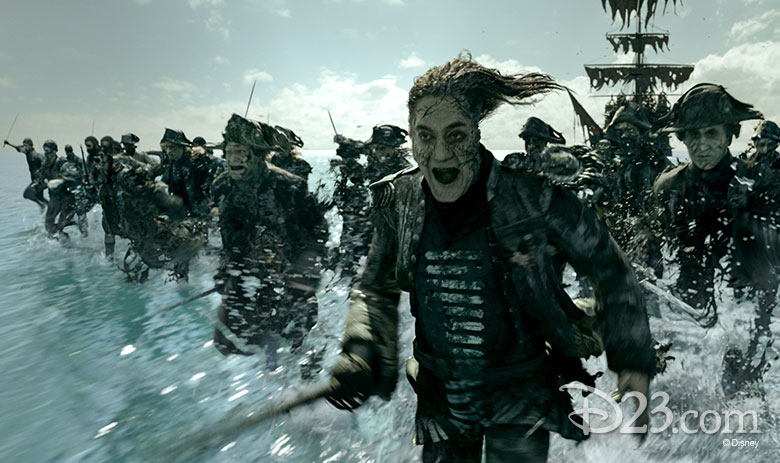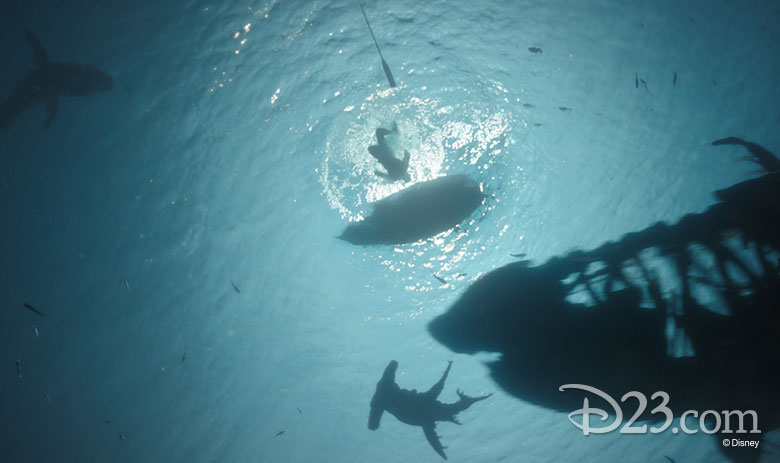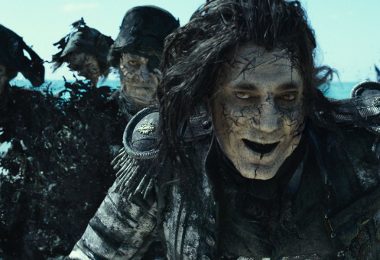By Courtney Potter
A cadaverous corps of ghostly sailors, led by an unearthly El Matador Del Mar (“the Killer of the Sea”)… miles and miles of churning ocean… undead sharks, ready for a feast. These are just a few of the amazing visual effects awaiting you in Pirates of the Caribbean: Dead Me Tell No Tales, the fifth film in Disney’s iconic Pirates franchise—and they were shepherded to the screen by Gary Brozenich, the film’s Visual Effects Supervisor. Gary, an Academy Award® nominee for 2013’s The Lone Ranger, tasked his incredible team with creating upwards of 2,000 visual effects shots… speeding Captain Jack Sparrow (Johnny Depp) along on a brand-new, high-seas adventure of an after-lifetime.
D23 spoke with Gary as the film readied for its Memorial Day weekend debut. “What I love about [the Pirates world] is it’s always a combination of absolute, unforgiving realism,” says Brozenich. “There’s a demand for realism because there are practical reasons for some of the visual effects… [and] that’s always coupled with fantasy, which is composed completely of a Pirates vocabulary… I find that the combination of those two things—almost like the ‘sweet and sour’ of both together—is compelling.”

With the Pirates of the Caribbean franchise, bewitching stories—as well as the extraordinary characters who tell them—are paramount… and visual effects enable both the filmmakers behind the scenes, and the actors in front of the camera, to tell their tales in the most captivating way possible. Case in point: The newest Pirates villain, the aforementioned “Killer of the Sea,” Captain Salazar (portrayed by Javier Bardem). “From a creative standpoint, I think [creating Salazar’s look] was probably one of our biggest challenges,” Brozenich explains, “and also probably one of the more interesting and fun parts of the work that we got to do for the film. Essentially, Salazar is trapped in an underwater world, along with his crew, for eternity… [Javier] would come onto the set with significant amounts of synthetic makeup on his face and hands, and a partial costume, and then [we’d add] the remaining parts… If you imagine anything that could float on a person if we threw them into a pool, that was something that we had to add back on to them in visual effects… ”
Brozenich and team also managed to seamlessly blend real footage of ocean water—shot on location in both Australia and Key West, Florida—with CG water environments, “something that had to be pretty meticulously planned from the start,” he admits. And let’s not forget the phantom animals found in that deep… a trio of ghost sharks, “one hammerhead and two great whites,” Brozenich says, “that play a very specific role in the film to get us from one part of the story to another… [They were] designed by Nigel Phelps, and they’re quite mangled, withered, eaten away, with whole sections missing where you can see through to the skeleton. There are practical versions of these dead sharks—but when they’re dropped into the ocean, the camera follows them down, they come to life, and that’s where our work begins.”

All told, Brozenich’s work on Dead Men Tell No Tales employed his treasure trove of experience to forge a film he can’t wait for audiences to enjoy. “The beauty of filmmaking is there are things that happen on the day that you can never plan for, and it’s figuring out the best way to [deal] with them,” he admits. “I think you always want to go in as heavily armed with information as you can be, especially for things that just ‘aren’t there.’ A giant blue screen, or somebody with half of their head missing, or a partial costume you’re going to be adding onto… you need to go into that with all the rules established, and with a real strong knowledge of what the final effect is intended to look like… There’s a huge amount of work that I think will slip right by and go unnoticed by audiences—and for all the right reasons.”





